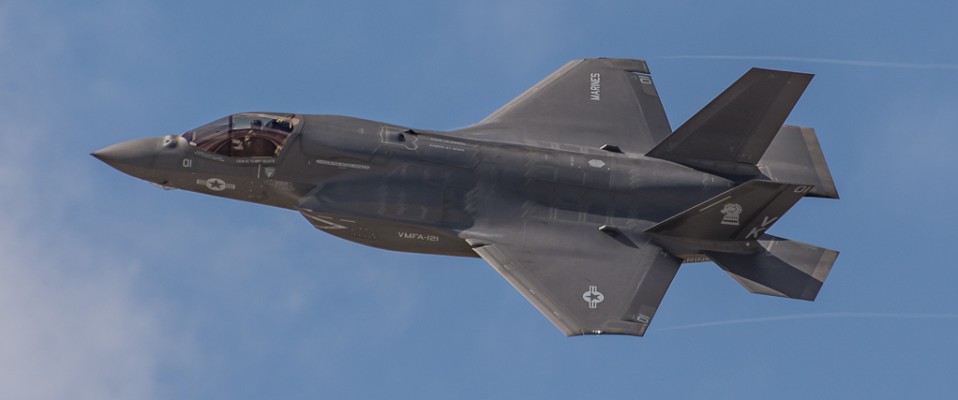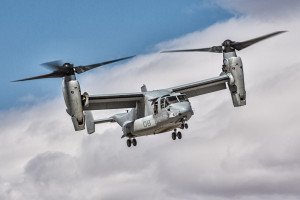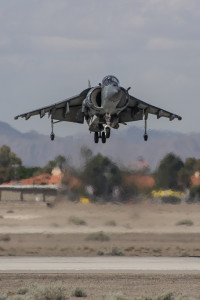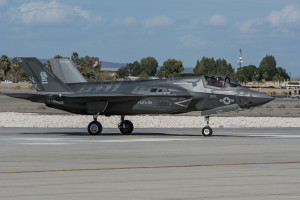2015 MCAS Yuma Airshow
Article and Photos by Steven Valinski
March 9, 2015
Where could you find great weather in February, free entertainment, and five military aircraft demonstrations? Not many other places than the 2015 MCAS Yuma Airshow.
There are not many places in the U.S. that have 75 degree temperatures in February. While many people in the mid-western and northeastern U.S. are still battling snowstorms, Yuma, Arizona has mild spring weather. Yuma is home to Marine Corps Air Station (MCAS) Yuma. MCAS Yuma is the busiest air station in the Marine Corps supporting 80 percent of the USMC’s air-to-ground aviation training due to its access to 2.8 million acres of training ranges and ideal flying weather. Every year, MCAS Yuma is home to one of the first, and finest, military air shows of the air show season.
The 2015 MCAS Yuma Airshow marked the 53rd annual show which kicked-off with a twilight show on Friday, February 27. Gates opened at 5pm for twilight performances from Gene Soucy Airshows in the “Showcat” biplane, Oliver’s Flying Circus in a de Havilland Canada DHC-1 Chipmunk, Chris Darnell and his Shockwave Jet Truck, Dan Buchanan Airshows’ hang glider, the MCAS Yuma Headquarters & Headquarters Squadron Search and Rescue (SAR) Demo, the F-35B Demo, and more…
While challenging to photograph, the twilight show provided spectators with an exciting evening performance, headlined by the Lockheed Martin F-35B Lightning II demonstration. The F-35B is the USMC version of Lockheed Martin’s latest 5th generation jet.
The full air show began on Saturday, February 28th with the gates opening at 8am. This provided enough time for spectators to enjoy the static aircraft displays, side performers, or the many vendors throughout the concourse.
Notable static displays included: a Lockheed C-5M Super Galaxy, Lockheed Martin KC-130J Hercules, McDonnell Douglas AV-8B Harrier II, Lockheed Martin F-35B Lightning II, Bell UH-1Y Venom, Bell AH-1Z Viper, Bell HH-1N Iroquois, Northrop F-5N Tiger II, Boeing B-52H Stratofortress, Bell Boeing MV-22B Osprey…and many more.
One of the more interesting static displays was a Boeing Vertol CH-46E Sea Knight which represented the Marine Medium Helicopter Training Squadron 164 (HMMT-164) “Knightriders”. With roots dating back to the Vietnam War, this is one of the last CH-46’s flying in an active squadron. Also known as a “Phrog”, this CH-46E was painted green instead of the common gray color of many USMC CH-46’s.
The 2015 MCAS Yuma Airshow began with an outstanding performance by the United States Marine Drum & Bugle Corps and ended with an F-35B Lightning II demonstration. Civilian performances included: The Misty Blues Skydiving Team, Gene Soucy Airshows in the “Showcat” biplane, Oliver’s Flying Circus in a de Havilland Canada DHC-1 Chipmunk, Chris Darnell and his Shockwave Jet Truck, Chuck Aaron in the Red Bull Helicopter, and the Yuma Aeromodelers Club.
The first military performance was the USMC SAR demonstration. This demonstration was performed by MCAS Yuma Headquarters & Headquarters Squadron (H&HS) Search & Rescue Unit. The MCAS Yuma H&HS consists of units vital to the operations of the base. These units include base command, public affairs, facilities maintenance, fire & rescue, air traffic control, fuels, ordnance, and other units vital to base operations. The H&HS Search & Rescue operates four Bell HH-1N Iroquois helicopters. These are some of the oldest Hueys still in military service with the only remaining “N” model Hueys still in active service. According to HM2 Petty Officer 2nd Class Ryan Mooney, a Navy SAR Corpsman with the unit: “our specialty is to do technical rescues, we are a rescue platform. We have the ability to get patients out of areas you are not usually able to walk into and get them out by other means. So the Corpsman is trained to repel out of the aircraft, start treating the patient on the ground, get them all stabilized and packaged…(then, the) aircraft will come back overhead, we can hoist out the patients, using the litters, or any other device that we have, and the Corpsman will go with them…short haul them or “long line”, as commonly referred to, and get the patient to the hospital”. “Short haul” or “long line” is a type of helicopter rescue where rescuers and patients are slung on a line attached to a helicopter. HM2 Mooney further added: “We have full cardiac monitoring, IV’s, devices for resuscitation, oxygen, everything in the back (of the helicopter) to get the patient treated and stabilized en route to the hospital”.
The SAR demonstration performed at the 2015 MCAS Yuma Airshow showcased the abilities of this valued unit by showing spectators how a rescue is performed. While the unit’s primary function is to support the base and it’s air operations, the SAR unit is often called upon to support civilian rescue efforts. According to HM2 Mooney, over 90% of the rescue calls are civilian-based. “For 2015, so far, “there have been eight rescues in which five of them could be classified as technical rescues”, HM2 Mooney added.
Considering this unit’s value to the community, an opportunity to provide a SAR demonstration at the air show is a positive experience for both the performers and the spectators. “The community knows we’re here, the Marine Corps knows we are here, people on base know we are here, but they are not always able to see what exactly Search and Rescue does. So, being able to show them kind of our “bread and butter” of what we are actually out there doing for our Marines, pilots that eject, or units that call us out…and, then on the civilian side as well, for the community to really see what going on, that’s important for us” said HM2 Mooney.
The second military aircraft demonstration was the flyby by a formation of Northrop F-5N Tiger II’s. These aircraft from Marine Fighter Training Squadron 401 (VMFT-401) “Snipers” provide the USMC with their only aggressor, or adversary, squadron. Aggressor, or adversary, squadrons are trained to emulate enemy tactics to help prepare pilots for actual air-to-air combat. VMFT-401, is one of the last three units to fly the F-5 Tiger II in the U.S. military. VMFT-401’s F-5’s were former Swiss Air Force aircraft that are now used to provide dissimilar air-to-air training for the USMC. The F-5 demo consisted of several formation passes of four F-5’s together for the spectators.
The next military demonstration was the Bell Boeing MV-22 Osprey demo. While classified as a tiltrotor aircraft, the Osprey can take-off and land as a helicopter. Once in the air, the Osprey’s rotors can be modified, or “tilted”, to perform as turboprop airplane capable of high-speed, high-altitude flight. The Osprey is capable of speeds up to twice as fast as most helicopters with vertical takeoff and landing (VTOL) or short takeoff and landing (STOL) capabilities. The U.S. Navy recently selected the Osprey to replace the Northrop Grumman C-2 Greyhound as its next carrier onboard delivery (COD) aircraft. The USMC is using the Osprey to replace it’s aging CH-46 helicopters.
Capable of transporting personnel, transporting cargo, acting as an aerial refueling aircraft, fitted as a gunship, and more, the V-22 Osprey can perform a variety of missions. Since 2007, the Osprey has successfully executed missions in Afghanistan, the Persian Gulf and the Mediterranean.
The MV-22 Oprey demo showed a full range of performance capabilities to spectators. The Osprey demonstration was performed by Marine Medium Tiltrotor Squadron 166 (VMM-166) “Sea Elks” out of MCAS Miramar, California. The demo showcased the unique capabilities of the Osprey. From a short take-off or vertical take-off, the Osprey was able to be quickly converted to a turboprop fixed-wing aircraft and fly at speeds much faster than any helicopter. The aircraft also showed it’s ability to swiftly maneuver and change directions.
The next military aircraft demonstration at the 2015 MCAS Yuma Air Show was the McDonnell Douglas AV-8B Harrier II demo. Powered by a single Rolls-Royce Pegasus engine, the Harrier has been a great fit for the USMC with it’s vertical or short takeoff and landing (V/STOL) capability. The Harrier was developed in Britain to operate from improvised landing pads and small aircraft carriers. The Harrier is one of the most maneuverable aircraft in the U.S. military with the ability to hover or “loiter” in an area to clear the way for ground troops. The Harrier has been successfully executing missions in many conflicts over the past 20 years. General Norman Schwarzkopf, U.S. Army, listed the USMC Harrier II as one of the seven most important weapons of the Gulf War.
The AV-8B Harrier II was performed by the historic Marine Attack Squadron 214 (VMA-214) “Black Sheep” based at MCAS Yuma. Originally referred to as “Pappy Boyington’s Squadron” during WWII, the Black Sheep were the basis of a television show: “Baa Baa Black Sheep”, which was loosely based on memoirs of the former commanding officer of the Black Sheep, Col. Gregory “Pappy” Boyington. Nonetheless, the squadron’s accomplishments during WWII paved the way for this historic squadron.
The Harrier level III demonstration took approximatly 10 minutes. The demo showed the Harrier’s ability to conduct a short take-off and show rapid acceleration to execute a mission. The Harrier’s hovering capabilities and ability to land vertically were also showcased. While spectators may be able to see Harriers departing and landing at bases like MCAS Yuma year-round, getting an intimate look at a vertical landing is something that is not often seen by the general public.
The final military aircraft demo of the 2015 MCAS Yuma Airshow was a performance by the Lockheed Martin F-35B Lightning II. According to Lockheed Martin: “the F-35 combines the 5th Generation characteristics of radar evading stealth, supersonic speed and extreme agility with the most powerful and comprehensive integrated sensor package of any fighter aircraft in history”. There are three variants of the F-35. The F-35A is the Conventional Take-Off and Landing (CTOL) variant used by the USAF. The F-35C is the Carrier Variant (CV) used by the Navy and the USMC, and, finally, the F-35B, which is the Short Take-Off and Vertical Landing (STOVL) used by the USMC.
The USMC, specifically, Marine Fighter Attack Squadron 121 (VMFA-121) “Green Knights”, have been paving the way towards initial operational capability (IOC) for the F-35 for many months, well ahead of other branches of the U.S. military (est – July ’15). USMC Major Michael “Puffy” Wyrsch, an F-35 pilot with VMFA-121 stated: “it’s an outstanding aircraft, it brings a lot of capabilities to the fight”. Maj Wyrsch also added: “with the F-35, with the 5th generation capabilities, it’s all integrated. The big “buzzword” is fusion. We don’t have a standalone radar that does what it does, by itself. We have all the systems that make up the F-35 talk to each other and they say “what are you seeing, this is what I’m seeing”, and they develop and outstanding picture for the pilot to develop situational awareness”.
While some of the technical capabilities of the F-35 are difficult to show an air show crowd, the USMC’s “B” variant flight capabilities were showcased. This includes the ability to hover and loiter much like the Harrier. According to Maj. Wyrsch, who was a former Harrier pilot, performing these maneuvers is much easier in an F-35. “The F-35 is a digital fly-by-wire, we (pilots) are a voting authority in the process, of doing vertical landings or short take-offs. We know when to put a control input and it does the rest for us. This keeps us out of dangerous situations, whether it’s a lateral limit, or a weight limit…the F-35, the way the control laws are built, and the way that the software is developed, it’s extremely easy to actually become qualified to be a STOVL pilot in the F-35”.
Being able to showcase the F-35 to the public is a rewarding experience for the pilots and the public. “It’s exciting, we enjoy it. Every workday of the year we fly our aircraft, we are flying over Yuma and the people that live in Yuma that come down, whether they are year-round or winter visitors, they see us flying and it’s great for us to bring the aircraft out here and show them “up close” what the aircraft looks like and answer their questions, and show them the demonstration, and what the F-35 is capable of” said Maj. Wyrsch.
Overall, the 2015 MCAS Yuma Air Show was a wonderful showcase of military airpower combined with outstanding civilian performances. To deliver these quality performances, with the support of five military aircraft demos, is something that cannot be duplicated by many other air shows. Add wonderful weather in February and it’s easy to see why the show is a “must see” for aviation enthusiasts. APD will be looking forward to the 2016 MCAS Yuma Air Show.
Aviation Photography Digest would like to extend a special “thank you” for their outstanding hospitality and support to: Captain Jose M Negrete, Captain Melanie M Salinas, PFC Casey A Scarpulla, and the remainder of the MCAS Yuma and 3rd MAW Public Affairs team.
Steven is from Long Island, New York and now resides in sunny Mesa, Arizona. Steven’s love for aviation began when he was a child with a fascination for WWII aircraft. This love of aviation was further fostered by his uncle, a long-time Trans World Airlines (TWA) employee who had a passion for all forms of aviation.
Steven’s interest in photography began when he was 16 years old when he received his first SLR camera, a Minolta XGA. It makes sense that eventually his passion for aviation and photography would merge into a love for aviation photography.
In addition to being the web designer, webmaster and chief editor of Aviation Photography Digest, Steven has been published in numerous magazines worldwide.
Steven has an M.S. from Boston University and uses Nikon photographic equipment.
Steven is a Nikon NPS member.
Steven can be reached at: [email protected]






